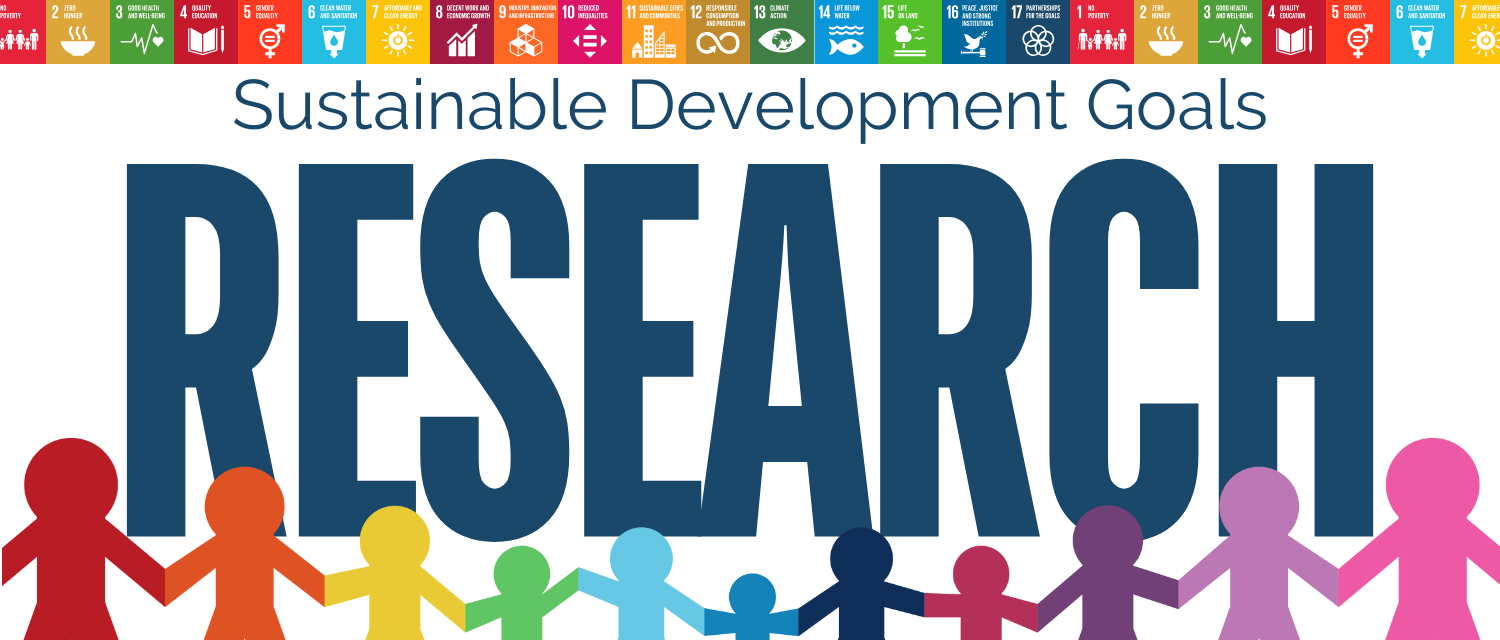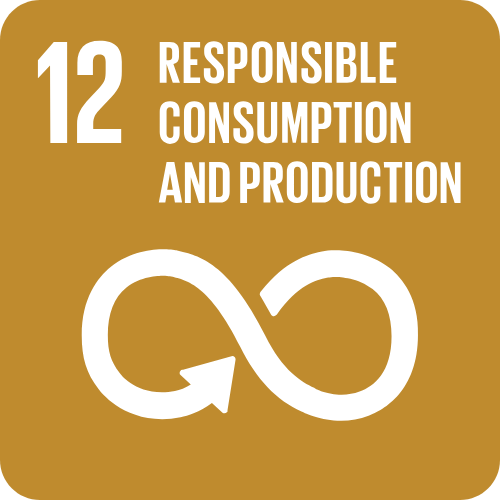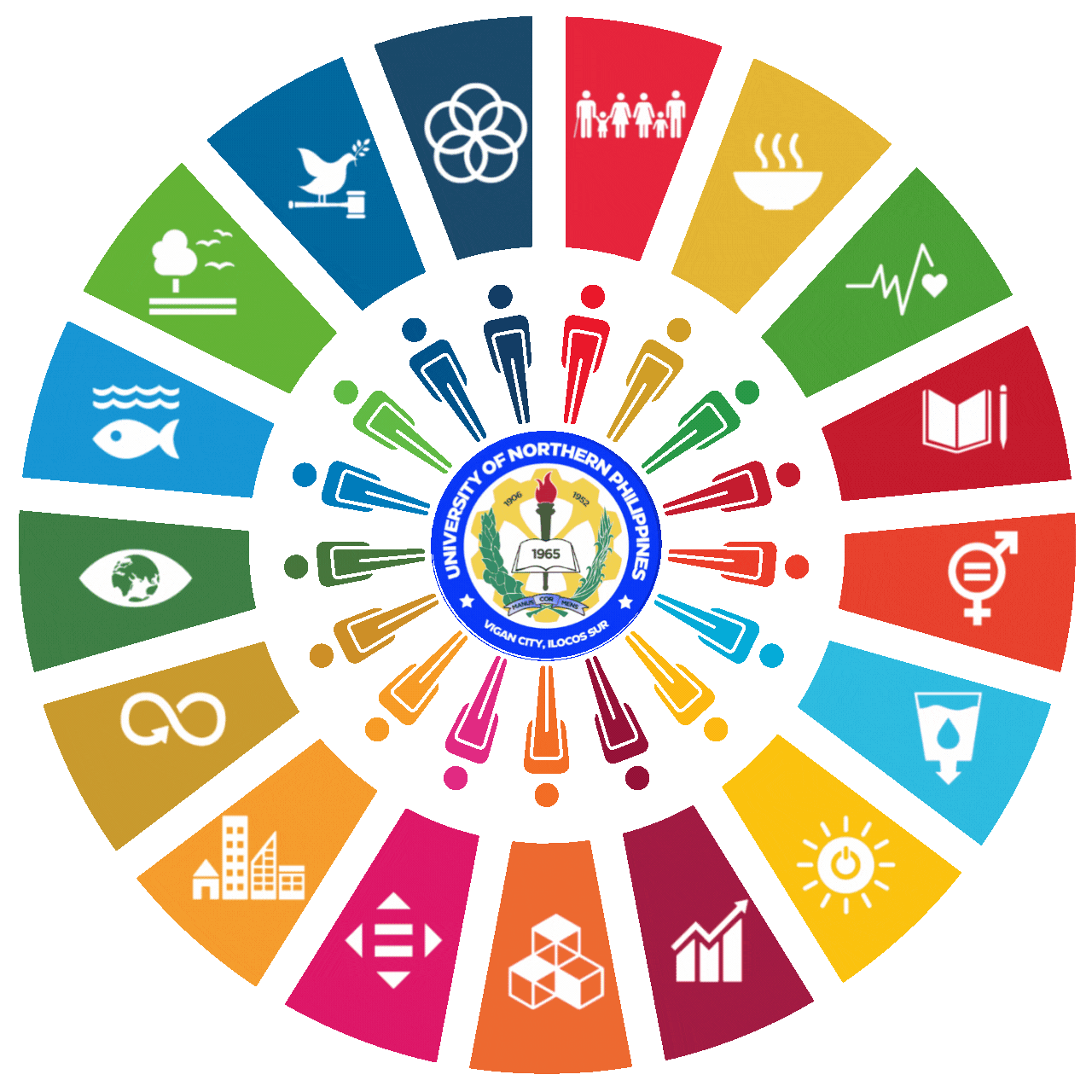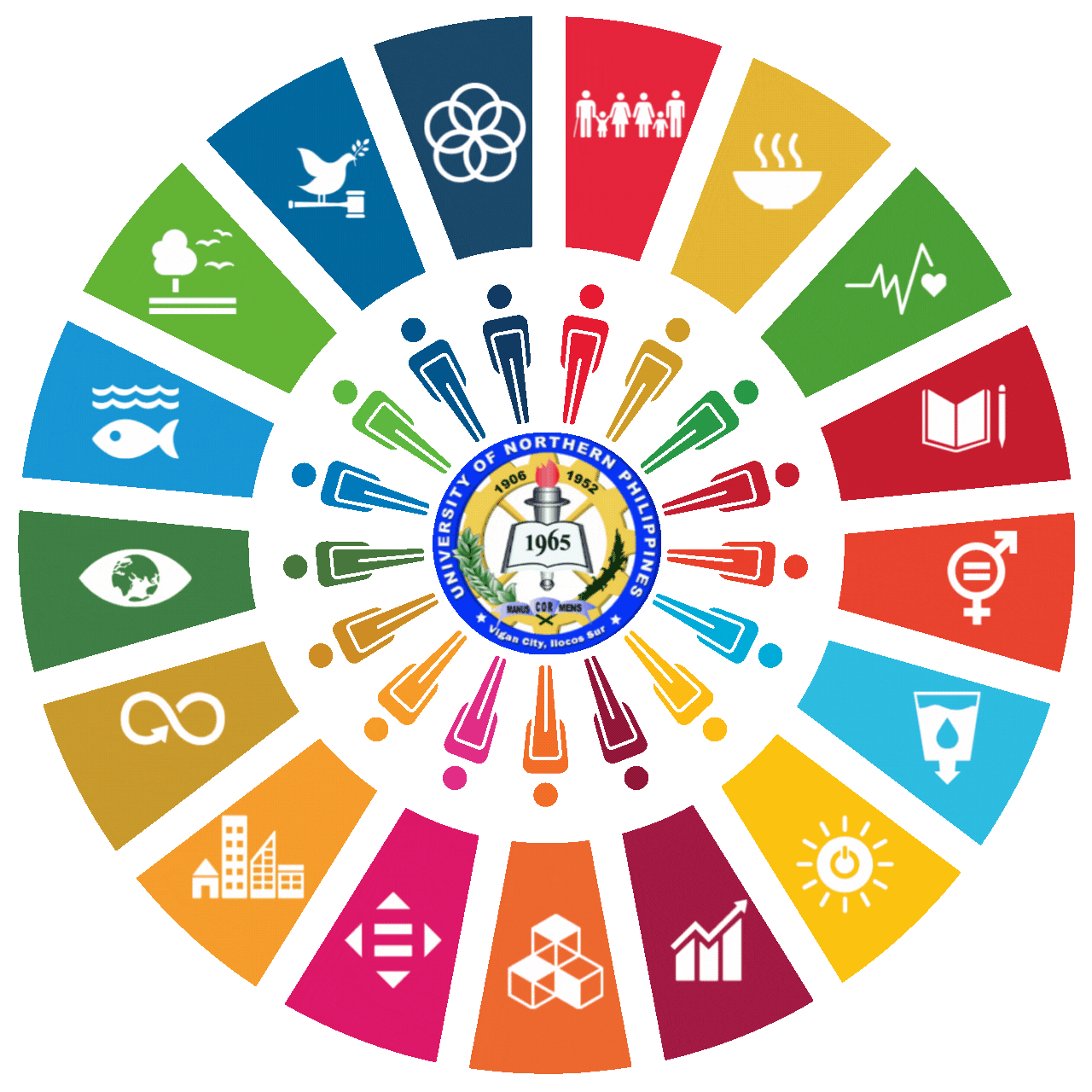

SDG 12 - RESPONSIBLE CONSUMPTION AND PROTECTION
The University of Northern Philippines (UNP) demonstrates a strong commitment to Sustainable Development Goal 4: Quality Education through its comprehensive approach to providing inclusive, and equitable quality education, and promoting lifelong learning opportunities for all.
Proponents: Clarence R. Renon, Odezza R. Bolor, Ronnielyn M. Castro, Ronaia Belle L. Rivera, Hendric James C. Ayon and Charo B. Rojas
Abstract: Hydroponic cultivation offers sustainable agricultural solutions, but the efficiency of water sources in hydroponic systems is underexplored. Understanding these sources is crucial for optimizing resource use, mitigating environmental impact, and ensuring long-term sustainability in hydroponic agriculture. This study aimed to assess the growth and yield performance of pechay (Brassica napus L.) var. Black Behi using hydroponic systems with different water sources: tap water (T1), unfiltered wastewater (T2), and filtered wastewater (T3). The research evaluated the sustainability of the CHRRO hydroponic system, which exclusively uses filtered wastewater (T3) for hydroponic cultivation. Using a Completely Randomized Design, 15 plants per treatment (T1, T2, and T3) were studied. The study measured growth parameters, including plant height, number of leaves, leaf width, and weight, and assessed the acceptability of the CHRRO hydroponic system in Bacsil, San Juan, Ilocos Sur, using standardized rating forms from experts in agriculture, science, electronics, and farming. Pechay plants in filtered wastewater (T3) exhibited superior growth and yield compared to those in tap water (T1) and unfiltered wastewater (T2). ANOVA confirmed significant differences (p < 0.05), with T3 being the most effective water source. The CHRRO system, utilizing filtered wastewater exclusively, received high acceptability ratings (mean rating: 4.56). However, Kendall's W indicated low agreement among experts (W= 0.133, p = 0.257), suggesting variability in evaluations due to differing expertise. The CHRRO system, which uses filtered wastewater, is ideal for hydroponic cultivation, and future research should include microbial analysis, nutrient profiling, economic and environmental assessments, continuous monitoring of water parameters, and expert feedback.
Keywords: Hydroponic, CHRRO hydroponic system, tap water, unfiltered wastewater, filtered wastewater
Proponents: Deborah Jaena R. Reoliquio Richel Royce T. Chan Gerald P. Valdez Kharl Patrick F. Partosan and Jesica P. Bayani
Abstract: This study aimed to develop tofu-banana peel dumplings and to determine the significant differences between fried dumplings (T0) and (T1) steamed dumplings in terms of appearance, taste, aroma, and texture. An experimental research design was used. A total of 50 respondents evaluated the developed product, comprising students and teaching personnel of the College of Business Administration and Accountancy. Weighted mean was used to analyze the data. Results of the study revealed that the fried dumpling (T0) mixtures were very much acceptable in terms of appearance, taste, aroma, and texture, while the steamed dumpling (T1) was very much acceptable. Significant differences existed between the acceptability of the two mixtures. Fried tofu-banana peel dumplings (T0) produced a better quality than the steamed tofu-banana peel dumplings (T1).
Keywords: product development, dumpling, experimental research
Proponents: Dea Meir Sebastian, Katrina Corpuz, Kasandra Nicole Erece, Kim Cherry Inot, Elyona Karis Laygo, Fate Janelle Perez, Frances Jane Ramos and Christian S. Domondon
Abstract: Despite the abundance of vegetable hummingbird (Sesbania grandiflora) flowers, locally known as Katuday/Katuray, they remain underutilized despite their potential as a sustainable food source. This research explored the feasibility of producing noodles from these flowers, branded as Katoodles (Katuday Noodles), to increase their utility and address wheat shortages. By examining the sensory characteristics of noodles made from vegetable hummingbird flowers and wheat flour, the study aimed to provide an innovative and sustainable food product. This quasi-experimental research used four ratios of blended vegetable hummingbird flowers to flour (0:100, 50:50, 60:40, and 40:60). Five food technology and cookery experts, along with five consumers, evaluated the Katoodles based on taste, texture, smell, and appearance using a Five-Point Hedonic Scale. Results indicated that noodles could successfully be made with these blends. Katoodles with 50% blended vegetable hummingbird flowers (Mixture 1) scored the highest in sensory evaluation, while commercial noodles (Mixture 0) scored the lowest. No significant difference was found among the Katoodles mixtures, suggesting consistent quality comparable to commercial products. This study highlights the broader potential of utilizing underutilized crops like Katuday/Katuray to promote sustainability and reduce reliance on wheat. Katoodles offers a nutritious, plant-based alternative, addressing the demand for healthier, eco-friendly options. Their commercialization could diversify the noodle market, create economic opportunities, and encourage the cultivation of sustainable crops. Further research on the nutritional value and marketability of Katoodles is recommended.
Keywords: Katoodles, mixtures, noodles, quasi-experimental, vegetable hummingbird flowers
Proponents: Abegail G. Pimienta, Jon Symon J. Tubon and Joselito D. Dela Rosa
Abstract: Improper household waste management poses significant environmental and health risks, emphasizing the importance of public awareness and sustainable practices. This study assessed the awareness and practices of household waste management among 106 residents of Barangay Borobor, Sto. Domingo, Ilocos Sur form March 2018 to March 2021. It examined awareness and practices related to segregation, reduction, reuse, recycling, and disposal and analyzed the relationship between residents’ profiles, awareness levels, and waste management practices. A descriptive-correlational design was employed, with data collected through validated survey questionnaires. Results showed that residents were knowledgeable about waste management, particularly segregation and reuse. However, challenges were noted in the implementation of disposal and recycling practices. Correlation analysis indicated no significant relationship between residents' profiles and their awareness, but awareness levels were significantly linked to specific practices such as segregation, reduction, and reuse. The study found that while residents are intensely aware of proper waste management, practices require improvement through targeted interventions. Strengthening barangay-led initiatives, such as waste management committees and educational campaigns, and fostering partnerships with local organizations to promote sustainable practices are highly recommended. The barangay council is encouraged to institutionalize household waste management through ordinances and incentivize active community participation. Future research should explore the long-term impacts of improved waste management practices and strategies for enhancing community engagement.
Keywords: awareness, practices, household waste management
Proponents: Selrahc Asle S. Acosta, Ed Mark R. Del Castillo, Jayson G. Vivar and Gaylord A. Frando
Abstract: This study explored the innovative use of Recycled Concrete Aggregate (RCA) combined with Super Absorbent Polymers (SAP) as a sustainable alternative to Natural Aggregate (NA) in concrete production. Addressing the traditional limitation of RCA usage to 30% due to water absorption and reduced strength, this research successfully increased the RCA content to 50% using a Two-Stage Mixing Approach (TSMA). Three concrete mixtures were tested: conventional concrete and two mixtures containing 50% RCA and 50% NA, incorporating 0.11% and 0.3% SAP by cement weight. Compressive and flexural strength tests conducted on cylindrical and beam samples after 28 days revealed that the flexural strength of the recycled concrete mixtures was comparable to that of traditional concrete, meeting the standards set by the Department of Public Works and Highways (DPWH). Notably, the mixture with 50% RCA, 50% NA, and 0.3% SAP achieved the highest compressive strength, surpassing the American Concrete Institute (ACI) standard of 17 MPa (2500 PSI). These findings highlighted the potential of TSMA and SAP to enhance the structural performance of RCA-based concrete, making it a viable and sustainable alternative to conventional concrete. This study introduced a novel method for increasing RCA utilization in structural applications, significantly reducing construction waste and promoting environmentally sustainable practices in the construction industry.
Keywords: Recycled Concrete Aggregate, Super Absorbent Polymers, Two-Stage Mixing Approach


















